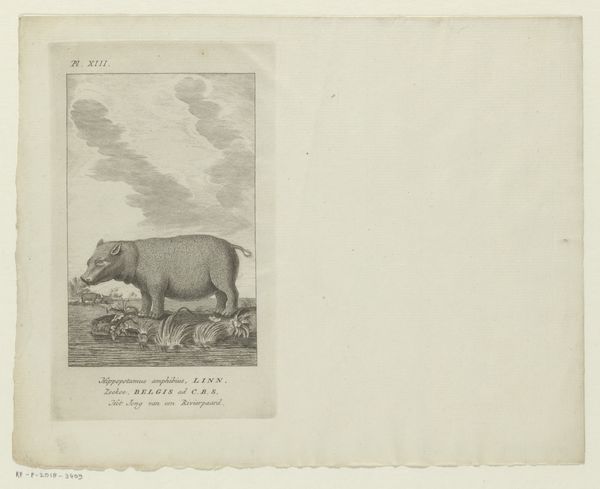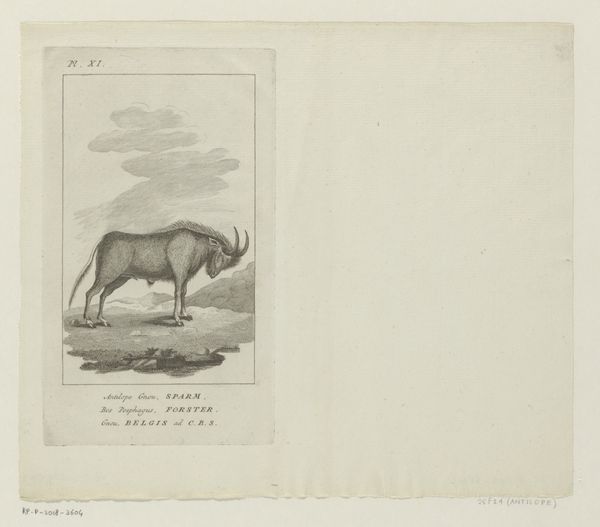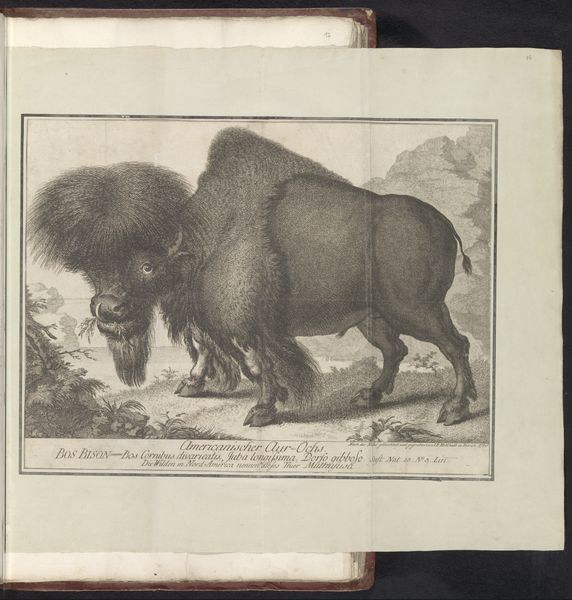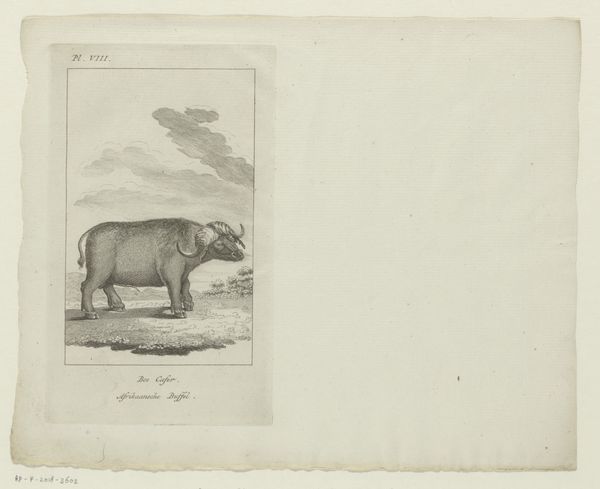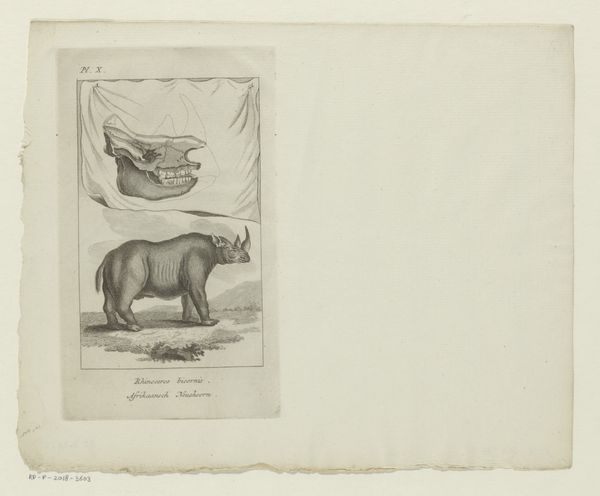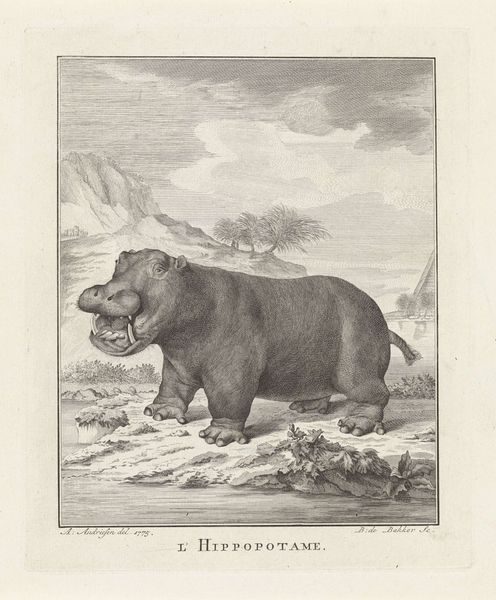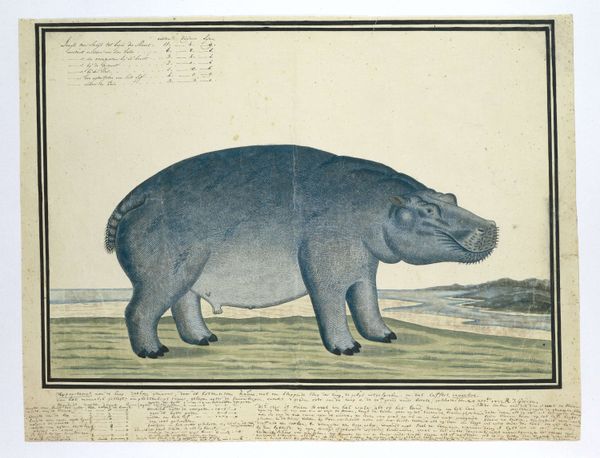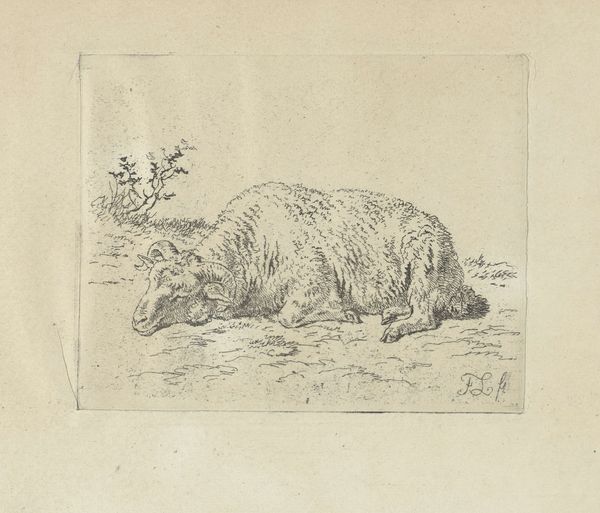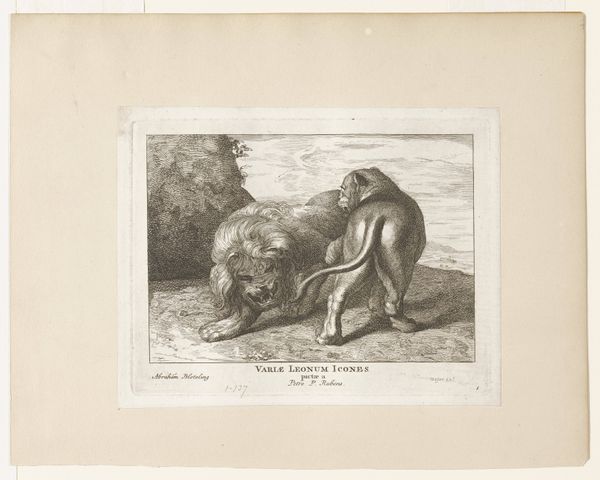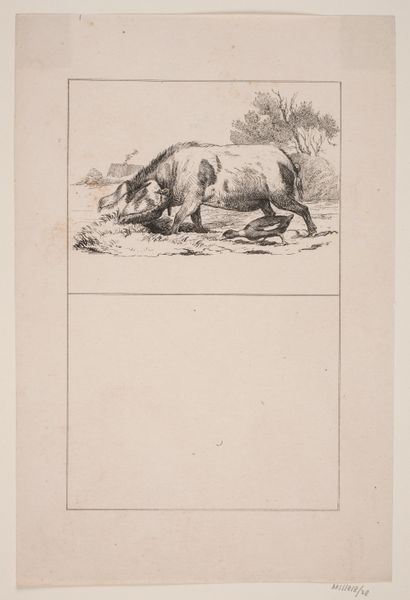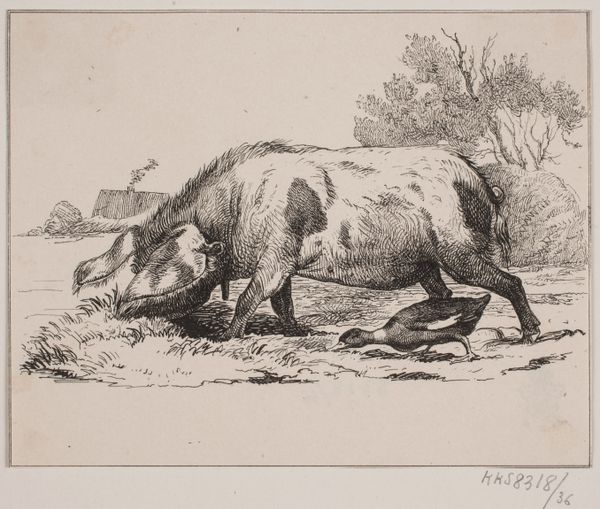
print, engraving
#
animal
# print
#
landscape
#
engraving
#
realism
Dimensions: height 205 mm, width 122 mm
Copyright: Rijks Museum: Open Domain
Curator: What a charming engraving! We're looking at "Nijlpaard aan de waterkant," which translates to "Hippopotamus on the Waterfront," dating back to 1787. It’s an anonymous print, rendering a hippo in a fairly realistic style. Editor: It strikes me as a bit melancholic, almost stoic. The hippo seems so solitary, framed against that pale sky. It's rendered so meticulously, yet the scene feels rather stark. Curator: That solitude is fascinating, especially when you consider how natural history illustrations circulated at the time. These prints were crucial in shaping the public's understanding of the natural world. They reflected colonial power and the "civilizing" gaze imposed upon far-off lands. Editor: And it’s important to acknowledge that process. Looking closely, I can see the careful labor in the fine lines and cross-hatching, which create the hippo’s volume. I find it fascinating that an everyday object such as this was crucial for scientific and social awareness. How widely accessible were these kinds of prints at the time? Curator: These prints existed within specific intellectual and economic spheres, shaping how knowledge was produced, disseminated, and received. Accessibility depended greatly on one's class and social standing. These types of natural history prints were circulating among learned societies. Editor: This makes me consider how much labor goes into printmaking, something easily overlooked when reproduced. Its production emphasizes the power of the hand. It's about more than the subject matter; it embodies the skill and intention embedded into material production. Curator: Absolutely. Considering its era, this image provides us with some interesting views of how Europeans understood, cataloged, and aesthetically represented the natural world, especially those parts deemed 'exotic' or distant. Editor: I appreciate that—highlighting both the artistic craft and historical viewpoint involved in such images gives you so much more to contemplate than what’s directly in front of you. Curator: Precisely, acknowledging that interplay of history, labor and societal position, lets us uncover deeper understandings that otherwise go unrecognized.
Comments
No comments
Be the first to comment and join the conversation on the ultimate creative platform.
